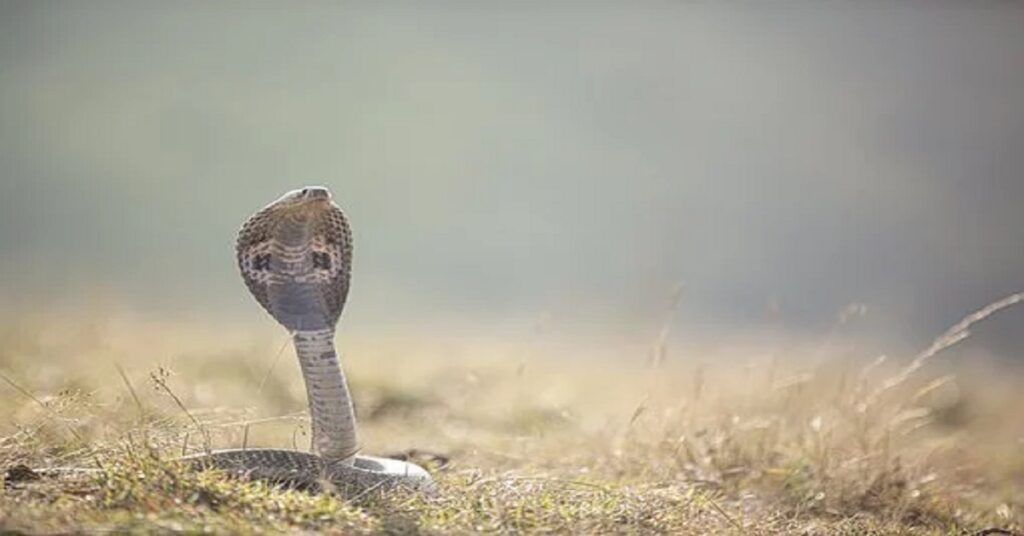In this post, I shall read Bihar Board Class 11th English Prose Chapter 1 Animals in Prison Line by Line Explanation in Hindi. BSEB Class 11th English Animals in Prison in Hindi.

1. ANIMALS IN PRISON (जेल में जानवर)
Jawaharlal Nehru
JAWAHARLAL NEHRU (1889-1964), India first Prime Minister was popular among the children as ‘Chacha Nehru’. He was a man of rare sensitivity. Educated at Harrow and Cambridge University, he became a barrister after studying Natural Science and Law and returned to India in 1921.
जवाहरलाल नेहरू (1889-1964), भारत के प्रथम प्रधानमंत्री बच्चों के बीच ‘चाचा नेहरू’ के नाम से लोकप्रिय थे। वे दुर्लभ संवेदनशीलता के व्यक्ति थे। हैरो और कैम्ब्रिज विश्वविद्यालय में शिक्षा प्राप्त करने के बाद, वे प्राकृतिक विज्ञान और कानून का अध्ययन करने के बाद बैरिस्टर बन गए और 1921 में भारत लौट आए।
Deeply influenced by Mahatma Gandhi, he joined Indian politics and soon emerged as a leader of the country’s youth. However, he was not a mere politician; he was also a dreamer, idealist, humanist, and artist in words as well. His works – An Autobiography, The Discovery of India, Glimpses of World History and Letters from a father to his Daughter – are remarkable for a rare vigour and beauty.
महात्मा गांधी से गहरे प्रभावित होकर वे भारतीय राजनीति में शामिल हो गए और जल्द ही देश के युवाओं के नेता के रूप में उभरे। हालाँकि, वह केवल एक राजनीतिज्ञ नहीं थे; वह एक सपने देखने वाले, आदर्शवादी, मानवतावादी और शब्दों में भी कलाकार थे। उनकी रचनाएँ – एक आत्मकथा, द डिस्कवरी ऑफ़ इंडिया, ग्लिम्प्स ऑफ़ वर्ल्ड हिस्ट्री एंड लेटर्स फ्रॉम अ फादर टू हिज़ डॉटर – एक दुर्लभ शक्ति और सुंदरता के लिए उल्लेखनीय हैं।
They establish him as a master of English prose. While in prison before Independence, he read books, observed nature, dreamt at times, and wrote in his powerful and poetic style about all that he thought and felt. His elegant poetical prose is best captured in his autobiography.
वे उन्हें अंग्रेजी गद्य के उस्ताद के रूप में स्थापित करते हैं। आजादी से पहले जेल में रहते हुए, उन्होंने किताबें पढ़ीं, प्रकृति का अवलोकन किया, कभी-कभी सपने देखे, और अपनी शक्तिशाली और काव्य शैली में वह सब कुछ लिखा जो उन्होंने सोचा और महसूस किया। उनकी आत्मकथा में उनके सुरुचिपूर्ण काव्य गद्य को सबसे अच्छी तरह से कैद किया गया है।
The following extract, taken from An Autobiography, reveals Nehru’s love for Nature. It is remarkable how he derives pleasure from watching different animals and gives respect even to the tiniest animals. The piece is a wonderful example of live and let live’.
एक आत्मकथा से लिया गया निम्नलिखित उद्धरण, प्रकृति के लिए नेहरू के प्रेम को प्रकट करता है। यह उल्लेखनीय है कि कैसे वह विभिन्न जानवरों को देखकर आनंद प्राप्त करता है और सबसे छोटे जानवरों को भी सम्मान देता है। यह टुकड़ा जियो और जीने दो का एक अद्भुत उदाहरण है।
(1). For fourteen and a half months I lived in my little cell or room in the Dehra Dun Gaol and I began to feel as if I was almost a part of it. I was familiar with every bit of it : I knew every mark and dent on the whitewashed walls and on the uneven floor and the ceiling with its moth-eaten rafters .in the little yard outside I greeted little tufts of grass and odd bits of stone as old friends. I was not alone in my cell, for several colonies of wasps and hornets lived there, and many lizards found a home behind the rafters, emerging in the evenings in search of prey. If thoughts and emotions leave their traces behind in the physical surroundings, the very air of that cell must be thick with them, and they must cling to every object in that little space.
साढ़े चौदह महीने तक मैं देहरादून गाओल में अपने छोटे से सेल या कमरे में रहा और मुझे ऐसा लगने लगा कि मैं इसका लगभग एक हिस्सा हूँ। मैं इसके हर हिस्से से परिचित था: मैं सफेदी वाली दीवारों पर और असमान फर्श और छत पर पतंगे खाने वाले छतों पर हर निशान और दांत जानता था। बाहर के छोटे से यार्ड में मैंने घास के छोटे टफ्ट्स और पत्थर के अजीब बिट्स का अभिवादन किया पुराने दोस्तों के रूप में। मैं अपनी कोठरी में अकेला नहीं था, क्योंकि वहाँ ततैया और सींगों की कई कॉलोनियाँ रहती थीं, और कई छिपकलियों को राफ्टर्स के पीछे एक घर मिला, जो शाम को शिकार की तलाश में निकलती थी। यदि विचार और भावनाएँ भौतिक परिवेश में अपनी छाप छोड़ती हैं, तो उस उनके साथ घनी होनी चाहिए, और उन्हें उस छोटी सी जगह में हर वस्तु से चिपकना चाहिए।
(2). I had had better cells in other prisons, but in Dehra Dun I had one privilege which was very precious to me. The gaol proper was a very small one, and we were kept in an old lock-up outside the gaol walls, but within the gaol compound This place was so small that there was no room to walk about in it , and so we were allowed, morning and evening, to go out and walk up and down in front of the gate, a distance of about hundred yards. We remained in the gaol compound, but this coming outside the walls gave us a view of the mountains and the fields and a public road at some distance. This was not a special privilege for me; it was common for all the A and B class prisoners kept at Dehra Dun. Within the compound, but outside the gaol walls, there was another small building called the European Lock-up. This had no enclosing wall, and a person inside the cell could have a fine view of the mountains and the life outside. European convicts and others kept here were also allowed to walk in front of the gaol gate every morning and evening.
मेरे पास अन्य जेलों में बेहतर सेल थे, लेकिन देहरादून में मुझे एक विशेषाधिकार मिला जो मेरे लिए बहुत कीमती था। गॉल ठीक बहुत छोटा था, और हमें जेल की दीवारों के बाहर एक पुराने लॉक-अप में रखा गया था, लेकिन गॉल परिसर के भीतर यह जगह इतनी छोटी थी कि इसमें चलने के लिए कोई जगह नहीं थी, और इसलिए हमें अनुमति दी गई थी , सुबह और शाम, बाहर जाना और फाटक के सामने ऊपर-नीचे चलना, लगभग सौ गज की दूरी। हम जेल परिसर में ही रहे, लेकिन दीवारों के बाहर आने से हमें पहाड़ों और खेतों और कुछ दूरी पर एक सार्वजनिक सड़क का नज़ारा मिला। यह मेरे लिए कोई विशेष विशेषाधिकार नहीं था; यह देहरादून में रखे गए सभी ए और बी श्रेणी के कैदियों के लिए आम था। परिसर के भीतर, लेकिन जेल की दीवारों के बाहर, एक और छोटी इमारत थी जिसे यूरोपीय लॉक-अप कहा जाता था। इसमें कोई दीवार नहीं थी, और कोठरी के अंदर एक व्यक्ति पहाड़ों और बाहर के जीवन का एक अच्छा दृश्य देख सकता था। यहां रखे गए यूरोपीय दोषियों और अन्य लोगों को भी हर सुबह और शाम गॉल गेट के सामने चलने की अनुमति थी।
(3). Only a prisoner who has been confined for long behind high walls can appreciate the extraordinary psychological value of these outside walks and open views. I loved these outings, and I did not give them up even during the monsoon, when the rain came down for days in torrents and I had to walk in ankle-deep of water. I would have welcomed the outing in any place, but the sight of the towering Himalayas nearby was an added joy which went a long way to removing the weariness of prison. It was my good fortune that during the long period when I had no interviews, and when for many months I was quite alone, I could gaze at these mountains that I loved. I could not see the mountains from my cell, but my mind was full of them and I was ever conscious of their nearness, and a secret intimacy seemed to grow between us.
केवल एक कैदी जो ऊंची दीवारों के पीछे लंबे समय तक सीमित रहा है, इन बाहरी सैर और खुले विचारों के असाधारण मनोवैज्ञानिक मूल्य की सराहना कर सकता है। मैं इन सैर-सपाटे से प्यार करता था, और मैंने उन्हें मानसून के दौरान भी नहीं छोड़ा, जब बारिश कई दिनों तक मूसलाधार बारिश में आती थी और मुझे टखने तक गहरे पानी में चलना पड़ता था। मैं किसी भी स्थान पर सैर का स्वागत करता, लेकिन पास में विशाल हिमालय का नजारा एक अतिरिक्त आनंद था जो जेल की थकान को दूर करने के लिए एक लंबा रास्ता तय करता था। यह मेरा सौभाग्य था कि उस लंबी अवधि के दौरान जब मेरा कोई साक्षात्कार नहीं था, और जब कई महीनों तक मैं काफी अकेला था, मैं इन पहाड़ों को देख सकता था जिन्हें मैं प्यार करता था। मैं अपनी कोठरी से पहाड़ों को नहीं देख सकता था, लेकिन मेरा मन उनमें भरा हुआ था और मैं उनकी निकटता के प्रति हमेशा सचेत रहता था, और हमारे बीच एक गुप्त अंतरंगता बढ़ती हुई प्रतीत होती थी।
*Flocks of birds have flown high and away;
A solitary drift of cloud, too, has gone, wandering on.
And I sit alone with Ching-ting Peak, towering beyond,
We never grow tired of each other, the mountain and I.’
*पक्षियों के झुंड ऊँचे और दूर उड़ गए हैं;
बादल का एकान्त बहाव भी, भटकता हुआ चला गया है।
और मैं चिंग-टिंग पीक के साथ अकेला बैठा हूं, जो कि परे है,
हम एक-दूसरे से कभी नहीं थकते, पहाड़ और मैं।’
(4).I am afraid I cannot say with the poet, Li T’ai Po, that I never grew weary, even of the mountain; but that was a rare experience, and, as a rule, I found great comfort in its proximity. Its solidity and calm looked down upon me with the wisdom of a million years, and mocked at my varying moods and soothed my fevered mind.
मुझे डर है कि मैं कवि ली ताई पो के साथ यह नहीं कह सकता, कि मैं कभी भी पहाड़ से नहीं थकता; लेकिन यह एक दुर्लभ अनुभव था, और, एक नियम के रूप में, मुझे इसकी निकटता में बहुत आराम मिला। इसकी दृढ़ता और शांति ने मुझे एक लाख वर्षों के ज्ञान के साथ नीचे देखा, और मेरे अलग-अलग मूड का मजाक उड़ाया और मेरे बुखार को शांत किया।
(5). Spring was very pleasant in Dehra Dun, and it was a far longer one than in the plains below. The winter had denuded almost all the trees of their leaves, and they stood naked and bare. Even four magnificent peepal trees, which stood in front of the gaol gate, much to my surprise, dropped nearly all their leaves. Gaunt and cheerless they stood there, till the spring air warmed them up again and sent a message of life to their innermost cells. Suddenly there was a stir both in the peepals and the other trees, and an air of mystery surrounded them as of secret operations going on behind the scenes, and I would be startled to find little bits of green peeping out all over them. It was a gay and cheering sight. And then, very rapidly the leaves would come out in their millions and glisten in the sunlight and play about in the breeze. How wonderful is the sudden change from bud to leaf!
देहरादून में वसंत बहुत सुखद था, और यह नीचे के मैदानों की तुलना में कहीं अधिक लंबा था। सर्दी ने उनके पत्तों के लगभग सभी पेड़ों को काट दिया था, और वे नग्न और नंगे खड़े थे। यहाँ तक कि चार शानदार पीपल के पेड़, जो गॉल गेट के सामने खड़े थे, मेरे लिए बहुत आश्चर्य की बात थी, उनके लगभग सभी पत्ते गिर गए। वे निडर और निडर वहाँ खड़े रहे, जब तक कि वसंत की हवा ने उन्हें फिर से गर्म नहीं कर दिया और उनके अंतरतम कोशिकाओं को जीवन का संदेश भेज दिया। अचानक पीपल और अन्य पेड़ों दोनों में हलचल मच गई, और रहस्य की एक हवा ने उन्हें घेर लिया जैसे कि पर्दे के पीछे गुप्त ऑपरेशन चल रहे थे, और मैं उन पर हरे रंग के छोटे-छोटे टुकड़ों को देखकर चौंक जाता था। यह एक समलैंगिक और उत्साहजनक दृश्य था। और फिर, बहुत तेजी से लाखों की संख्या में पत्ते निकल आते थे और धूप में चमकते थे और हवा में खेलते थे। कली से पत्ती में अचानक परिवर्तन कितना अद्भुत है!
(6). I had never noticed before that fresh mango leaves are russet-coloured, remarkably like the autumn tints on the Kashmir hills. But, they change colour soon and become green.
मैंने पहले कभी नहीं देखा था कि आम के ताजे पत्ते रसीले रंग के होते हैं, उल्लेखनीय रूप से कश्मीर की पहाड़ियों पर पतझड़ के रंग के होते हैं। लेकिन, वे जल्द ही रंग बदलते हैं और हरे हो जाते हैं।
(7). The monsoon rains were always welcome, for they ended the summer heat. But, one could have too much of a good thing, and Dehra Dun is one of the favoured haunts of the rain god. Within the first five or six weeks of the break of the monsoon we would have about fifty or sixty inches of rain, and it was not pleasant to sit cooped up in a little narrow place trying to avoid the water dripping from the ceiling or rushing in from the windows.
मानसून की बारिश का हमेशा स्वागत था, क्योंकि उन्होंने गर्मी की गर्मी समाप्त कर दी थी। लेकिन, किसी के पास बहुत अधिक अच्छी चीज हो सकती है, और देहरादून वर्षा देवता के पसंदीदा स्थानों में से एक है। मानसून के टूटने के पहले पांच या छह हफ्तों के भीतर हमारे पास लगभग पचास या साठ इंच बारिश होगी, और छत से टपकने वाले पानी से बचने की कोशिश कर रही एक छोटी सी संकरी जगह पर बैठकर बैठना सुखद नहीं था। खिड़कियों से।
(8). Autumn again was pleasant, and so was the winter, except when it rained. With thunder and rain and piercing cold winds, one longed for a decent habitation and a little warmth and comfort. Occasionally there would be a hailstorm, with hailstones bigger than marbles coming down on the corrugated iron roofs and making a tremendous noise, something like an artillery bombardment.
शरद ऋतु फिर से सुखद थी, और सर्दी भी थी, सिवाय जब बारिश हुई। गड़गड़ाहट और बारिश और ठंडी हवाओं के साथ, एक सभ्य आवास और थोड़ी गर्मी और आराम के लिए तरस रहा था। कभी-कभी ओलावृष्टि होती थी, जिसमें पत्थर से बड़े ओले लोहे की नालीदार छतों पर गिरते थे और एक जबरदस्त शोर करते थे, जो तोपखाने की बमबारी जैसा कुछ था।
(9). I remember one day particularly: it was the 24th of December, 1932. There was a thunder storm and rain all day, and it was bitterly cold. Altogether it was one of the most miserable days, from the bodily point of view, that I have spent in gaol. In the evening it cleared up suddenly and all my misery departed when I saw all the neighbouring mountains and hills covered with a thick mantle of snow. The next day – Christmas Day – was lovely and clear, and there was a beautiful view of snow-covered mountains.
मुझे एक दिन विशेष रूप से याद है: वह 24 दिसंबर, 1932 था। पूरे दिन गरज के साथ आंधी और बारिश हुई, और कड़ाके की ठंड थी। कुल मिलाकर यह शारीरिक दृष्टि से सबसे दयनीय दिनों में से एक था, जिसे मैंने जेल में बिताया है। शाम को यह अचानक साफ हो गया और मेरे सारे दुख दूर हो गए जब मैंने आसपास के सभी पहाड़ों और पहाड़ियों को बर्फ की मोटी चादर से ढका हुआ देखा। अगले दिन – क्रिसमस दिवस – प्यारा और स्पष्ट था, और बर्फ से ढके पहाड़ों का एक सुंदर दृश्य था।
(10). Prevented from indulging in normal activities we became more observant of nature’s ways. We watched also the various animals and insects that came our way. As I grew more observant I noticed all manner of insects living in my cell or in the little yard outside. I realized that while I complained of loneliness, that yard, which seemed empty and deserted, was teeming with life. All these creeping or crawling or flying insects lived their life without interfering with me in any way, and I saw no reason why I should interfere with them. But there was continuous war between me and bed-bugs, mosquitoes, and, to some extent, flies. Wasps and hornets I tolerated, and there were hundreds of them in my cell. there had been a little tiff between us when . inadvertently I think a wasp had stung me. in my anger I tired to exterminate the lot, but they put up a brave fight in defence of their temporary home, which probably contained their egg, and I desisted and decided to leave them in peace if they did not interfere with me any more. for over a year after that I lived in the cell surrounded by these wasps and hornets, and they never attacked me, and we respected each other
सामान्य गतिविधियों में शामिल होने से रोककर हम प्रकृति के तरीकों के प्रति अधिक चौकस हो गए। हमने अपने रास्ते में आने वाले विभिन्न जानवरों और कीड़ों को भी देखा। जैसे-जैसे मैं और अधिक चौकस होता गया, मैंने अपने सेल में या बाहर छोटे से यार्ड में रहने वाले सभी प्रकार के कीड़ों को देखा। मुझे एहसास हुआ कि जब मैंने अकेलेपन की शिकायत की, तो वह आँगन, जो खाली और सुनसान लग रहा था, जीवन से भरा हुआ था। ये सभी रेंगने वाले या रेंगने वाले या उड़ने वाले कीड़े मेरे साथ किसी भी तरह का हस्तक्षेप किए बिना अपना जीवन व्यतीत करते थे, और मुझे उनके साथ हस्तक्षेप करने का कोई कारण नहीं दिखता था। लेकिन मेरे और खटमल, मच्छरों और कुछ हद तक मक्खियों के बीच लगातार युद्ध चल रहा था। ततैया और सींग मैंने सहे थे, और मेरी कोठरी में सैकड़ों थे। जब हमारे बीच थोड़ा झगड़ा हुआ था। अनजाने में मुझे लगता है कि एक ततैया ने मुझे डंक मार दिया था। अपने क्रोध में मैं बहुत से लोगों को नष्ट करने के लिए थक गया, लेकिन उन्होंने अपने अस्थायी घर की रक्षा में एक बहादुर लड़ाई लड़ी, जिसमें शायद उनका अंडा था, और मैंने उन्हें छोड़ दिया और अगर उन्होंने मेरे साथ और हस्तक्षेप नहीं किया तो उन्हें शांति से छोड़ने का फैसला किया। उसके बाद एक साल से अधिक समय तक मैं इन ततैया और सींगों से घिरी कोठरी में रहा, और उन्होंने मुझ पर कभी हमला नहीं किया, और हम एक दूसरे का सम्मान करते थे
(11).Bats I did not like but I had to endure them. They flew soundlessly in the evening dusk, and one could just see them against the darkening sky. Eerie things; I had a horror of them. They seemed to pass within an inch of one’s face, and I was always afraid that they might hit me. Higher up in the air passed the big bats, the flying-foxes.
चमगादड़ मुझे पसंद नहीं थे लेकिन मुझे उन्हें सहना पड़ा। वे शाम की शाम को बिना आवाज़ के उड़ते थे, और कोई उन्हें बस काले आसमान के सामने देख सकता था। भयानक चीजें; मुझे उनसे डर लगता था। वे किसी के चेहरे के एक इंच के भीतर से गुजर रहे थे, और मुझे हमेशा डर था कि वे मुझे मार सकते हैं। ऊपर हवा में बड़े चमगादड़, उड़ने वाले लोमड़ियों के पास से गुजरे।
(12). I used to watch the ants and the white ants and other insects by the hour. And the lizards as they crept about in the evenings and stalked their prey and chased each other, wagging their tails in a most comic fashion. Ordinarily they avoided wasps, but twice I saw them stalk them with enormous care and seize them from the front. I do not know if this avoidance of the sting was intentional or accidental.
मैं घंटे के हिसाब से चींटियों और सफेद चींटियों और अन्य कीड़ों को देखता था। और छिपकलियाँ जब शाम को रेंगती थीं और अपने शिकार का पीछा करती थीं और एक-दूसरे का पीछा करती थीं, सबसे हास्यपूर्ण अंदाज़ में अपनी पूंछ हिलाती थीं। आमतौर पर वे ततैया से बचते थे, लेकिन दो बार मैंने उन्हें बड़ी सावधानी से उनका पीछा करते हुए देखा और उन्हें सामने से पकड़ लिया। मुझे नहीं पता कि स्टिंग से बचने का यह तरीका जानबूझकर था या आकस्मिक।
(13) Then there were squirrels, crowds of them if trees were about. They would become very venturesome and come right near us. In Lucknow Gaol I used to sit reading almost without moving for considerable periods, and a squirrel would climb up my leg and sit on my knee and have a look round. And then it would look into my eyes and realize that I was not a tree or whatever it had taken me for. Fear would disable it for a moment, and then it would scamper away. Little baby squirrels would sometimes fall down from the trees. The mother would come after them, roll them up into a little ball, and carry them off to safety. Occasionally, the baby got lost. One of my companions picked up three of these lost baby squirrels and looked after them. They were so tiny that it was a problem feeding them. The problem was, however solved rather ingeniously. A fountain pen filler, with a little cotton wool attached to it made an efficient feeding bottle.
फिर गिलहरियाँ थीं, अगर पेड़ आसपास हों तो उनकी भीड़। वे बहुत उद्यमशील बन जाते और ठीक हमारे पास आ जाते। लखनऊ गॉल में मैं काफी देर तक बिना हिले-डुले बैठकर पढ़ता रहता था, और एक गिलहरी मेरे पैर पर चढ़कर मेरे घुटने पर बैठ जाती और चारों ओर देखती। और तब यह मेरी आँखों में देखेगा और महसूस करेगा कि मैं एक पेड़ नहीं था या जो कुछ भी उसने मुझे लिया था। डर उसे एक पल के लिए निष्क्रिय कर देगा, और फिर वह बिखर जाएगा। गिलहरी के छोटे बच्चे कभी-कभी पेड़ों से गिर जाते थे। माँ उनके पीछे आती, उन्हें एक छोटी सी गेंद में रोल करती, और उन्हें सुरक्षित स्थान पर ले जाती। कभी-कभी तो बच्चा गुम हो जाता था। मेरे एक साथी ने इनमें से तीन खोई हुई गिलहरियों को उठाया और उनकी देखभाल की। वे इतने छोटे थे कि उन्हें खिलाने में समस्या हो रही थी। हालाँकि, समस्या को सरलता से हल किया गया था। एक फाउंटेन पेन फिलर, जिसमें थोड़ा रूई लगा होता है, एक कुशल फीडिंग बोतल बनाता है।
(14). Pigeons abounded in all the gaols l went to, except in the mountain prison of Almora. There were thousands of them. Sometimes the gaol officials would shoot them down and feed on them. There were mainas, of course; they are to be found everywhere. A pair of them nested over my cell door in Dehra and I used to feed them. They grew quite tame, and if there was any delay in their morning or evening meal they would sit quite near me and loudly demand their food. It was amusing to watch their signs and listen to their impatient cries.
अल्मोड़ा के पर्वतीय कारागार को छोड़कर, जिन सभी गॉल में मैं गया, उनमें कबूतरों की भरमार थी। उनमें से हजारों थे। कभी-कभी जेल के अधिकारी उन्हें गोली मारकर खा जाते थे। निश्चित रूप से मेनस थे; उन्हें हर जगह पाया जाना है। उनमें से एक जोड़े ने देहरा में मेरे सेल के दरवाजे पर घोंसला बनाया और मैं उन्हें खाना खिलाता था। वे काफी बड़े हो गए थे, और अगर उनके सुबह या शाम के भोजन में कोई देरी होती तो वे मेरे पास बैठ जाते और जोर-जोर से अपने भोजन की मांग करते। उनके संकेतों को देखना और उनके अधीर रोने को सुनना मनोरंजक था।
(15). In Naini there were thousands of parrots, and large numbers of them lived in the crevices of my barrack walls. Their courtship and love-making was always a fascinating sight, and sometimes there were fierce quarrels between two male parrots over a lady parrot, who sat calmly by waiting for the result of the encounter and ready to grant her favours to the winner.
नैनी में हजारों तोते थे, और उनमें से बड़ी संख्या में मेरी बैरक की दीवारों की दरारों में रहते थे। उनका प्रेमालाप और प्रेम-प्रसंग हमेशा एक आकर्षक नजारा था, और कभी-कभी दो नर तोतों के बीच एक महिला तोते को लेकर भीषण झगड़े होते थे, जो मुठभेड़ के परिणाम की प्रतीक्षा में शांति से बैठे थे और विजेता को अपना पक्ष देने के लिए तैयार थे।
(16). Dehra Dun had a variety of birds, and there was a regular jumble of singing lively chattering and twittering and high above it all came the koel’s plaintive call, During the monsoon and just before it the Brain-Fever bird visited us, and I realized soon why it was so named. It was amazing the persistence with which it went on repeating the same notes, in day-time and at night, in sunshine and in pouring rain. We could not see most of these birds; we could only hear them as a rule, as there were no trees in our little yard. But, I used to watch the eagles and the kites gliding gracefully high up in the air, sometimes swooping down and then allowing themselves to be carried up by a current of air. Often a horde of wild ducks would fly over our heads.
देहरादून में तरह-तरह के पक्षी थे, और जीवंत बकबक और चहचहाना गाने की एक नियमित गड़गड़ाहट थी और सबसे ऊपर कोयल की वादी पुकार आई, मानसून के दौरान और उससे ठीक पहले ब्रेन-फीवर पक्षी हमारे पास आया, और मुझे जल्द ही एहसास हुआ इसका इतना नाम क्यों रखा गया। यह आश्चर्यजनक था कि जिस दृढ़ता के साथ वह दिन में और रात में, धूप में और बारिश में एक ही स्वर को दोहराता चला गया। हम इनमें से अधिकतर पक्षियों को नहीं देख सके; हम उन्हें केवल एक नियम के रूप में सुन सकते थे, क्योंकि हमारे छोटे से यार्ड में कोई पेड़ नहीं थे। लेकिन, मैं चील और पतंगों को हवा में इनायत से ऊपर की ओर उड़ते हुए देखता था, कभी-कभी झपट्टा मारकर और फिर खुद को हवा की धारा द्वारा ऊपर ले जाने की अनुमति देता था। अक्सर जंगली बत्तखों का झुंड हमारे सिर के ऊपर से उड़ जाता था।
(17). There was a large colony of monkeys in Bareilly Gaol and their antics were always worth watching. One incident impressed me. A baby monkey managed to come down into our barrack enclosure and he could not mount up the wall again. The warder and some convict overseers and other prisoners caught hold of him and tied a bit of string round his neck. The parents (presumably) of the little one saw all this from the top of the high wall, and their anger grew. Suddenly one of them, a huge monkey, jumped down and charged almost right into the crowd which surrounded the baby monkey. It was an extraordinary brave thing to do, for the warders had sticks and lathis and they were waving them about, and there was quite a crowd of them. Reckless courage triumphed, and the crowd of humans fled terrified, leaving their sticks behind them! The little monkey was rescued.
बरेली गाओल में बंदरों की एक बड़ी बस्ती थी और उनकी हरकतें हमेशा देखने लायक होती थीं। एक घटना ने मुझे प्रभावित किया। एक बंदर का बच्चा हमारे बैरक के बाड़े में नीचे आने में कामयाब रहा और वह फिर से दीवार नहीं चढ़ा सका। वार्डर और कुछ दोषी ओवरसियर और अन्य कैदियों ने उसे पकड़ लिया और उसके गले में थोड़ा सा तार बांध दिया। बच्चे के माता-पिता (संभवतः) ने ऊंची दीवार के ऊपर से यह सब देखा और उनका गुस्सा बढ़ गया। अचानक उनमें से एक, एक विशाल बंदर, नीचे कूद गया और बच्चे बंदर को घेरने वाली भीड़ में लगभग सही हो गया। यह एक असाधारण बहादुरी का काम था, क्योंकि वार्डरों के पास लाठियां और लाठियां थीं और वे उन्हें लहरा रहे थे, और उनमें काफी भीड़ थी। लापरवाह साहस की जीत हुई, और मनुष्यों की भीड़ अपने पीछे लाठी छोड़कर भाग गई! छोटे बंदर को बचा लिया गया।
(18). We often had animal visitors that were not welcome. Scorpions were frequently found in our cells, especially after a thunderstorm. It was surprising that I was never stung by one, for I would come across them in the most unlikely places on my bed, or sitting on a book which I had just lined up. I kept a particularly black and poisonous-looking brute in a bottle for some time, feeding him with flies, etc., and then when I tied him up on a wall with a string he managed to escape. I had no desire to meet him loose again, and so I cleaned my cell out and hunted for him everywhere, but he had vanished.
हमारे पास अक्सर पशु आगंतुक होते थे जिनका स्वागत नहीं किया जाता था। बिच्छू अक्सर हमारी कोशिकाओं में पाए जाते थे, खासकर आंधी के बाद। यह आश्चर्य की बात थी कि मुझे कभी एक ने नहीं काटा, क्योंकि मैं उन्हें अपने बिस्तर पर सबसे असंभाव्य स्थानों पर, या एक किताब पर बैठा हुआ था, जिसे मैंने अभी-अभी पंक्तिबद्ध किया था। मैंने एक विशेष रूप से काले और जहरीले दिखने वाले जानवर को कुछ समय के लिए एक बोतल में रखा, उसे मक्खियों आदि से खिलाया, और फिर जब मैंने उसे एक दीवार पर एक तार से बांध दिया तो वह भागने में सफल रहा। मुझे उससे फिर से मिलने की कोई इच्छा नहीं थी, और इसलिए मैंने अपने सेल को साफ किया और हर जगह उसका शिकार किया, लेकिन वह गायब हो गया था।
(19). Three or four snakes were also found in my cells or near them. News of one of them got out, and there were headlines in the Press. As a matter of fact I welcomed the diversion. Prison life is dull enough, and everything that breaks through the monotony is appreciated. Not that I appreciate or welcome snakes, but they do not fill me with terror as they do some people. I am afraid of their bite, of course, and would protect myself if I saw a snake. But there would be no feeling of repulsion or overwhelming fright. Centipedes horrify me much more; it is not so much fear as instinctive repulsion. In Alipore Gaol in Calcutta I woke in the middle of the night and felt something crawling over my foot. I pressed a torch I had and I saw a centipede on the bed. Instinctively and with amazing rapidity I vaulted clear out of that bed and nearly hit the cell wall. I realized fully then what Pavlov’s reflexes were.
मेरी कोठरियों में या उनके आस-पास तीन-चार सांप भी मिले। उनमें से एक की खबर निकली और प्रेस में सुर्खियां बटोरीं। वास्तव में मैंने इस मोड़ का स्वागत किया। जेल का जीवन काफी नीरस है, और एकरसता से टूटने वाली हर चीज की सराहना की जाती है। ऐसा नहीं है कि मैं सांपों की सराहना करता हूं या उनका स्वागत करता हूं, लेकिन वे मुझे आतंक से नहीं भरते जैसे वे कुछ लोगों को करते हैं। बेशक, मुझे उनके काटने से डर लगता है, और अगर मैंने सांप को देखा तो मैं अपनी रक्षा करूंगा। लेकिन प्रतिकर्षण या अत्यधिक भय की कोई भावना नहीं होगी। सेंटीपीड मुझे और अधिक भयभीत करते हैं; यह इतना भय नहीं है जितना कि सहज प्रतिकर्षण। कलकत्ता के अलीपुर गॉल में मैं आधी रात को उठा और महसूस किया कि मेरे पैर पर कुछ रेंग रहा है। मैंने अपने पास एक मशाल दबाया और मैंने बिस्तर पर एक सेंटीपीड देखा। सहजता से और अद्भुत गति के साथ मैं उस बिस्तर से बाहर निकल आया और लगभग सेल की दीवार से टकरा गया। मुझे तब पूरी तरह से एहसास हुआ कि पावलोव की सजगता क्या थी।
(20). In Dehra Dun I saw a new animal, or rather an animal which was new to me. I was standing at the gaol gate talking to the gaoler when we noticed a man outside carrying a strange animal. The gaoler sent for him, and I saw something between a lizard and a crocodile, about two feet long, with claws and a scaly covering. This animal, which was very much alive, had been twisted round in a most peculiar way forming a kind of knot, and its owner had passed a pole through this knot and was merrily carrying it in this fashion. He called it a ‘Bo’. When asked by the gaoler what he proposed to do with it, he replied with a broad smile that he would make bhujji – a kind of curry-out of it! He was a forest-dweller. Subsequently, I discovered from reading F.W. Champion’s book – “The Jungle in Sunlight and Shadow’- that this animal was the Pangolin.
देहरादून में मैंने एक नया जानवर देखा, या यों कहें कि एक जानवर जो मेरे लिए नया था। मैं गॉल गेट पर खड़ा था और गाऊलर से बात कर रहा था, तभी हमने देखा कि बाहर एक आदमी एक अजीब जानवर ले जा रहा है। गॉलर ने उसे बुलवाया, और मैंने एक छिपकली और एक मगरमच्छ के बीच कुछ देखा, लगभग दो फीट लंबा, पंजे और एक परतदार आवरण के साथ। यह जानवर, जो बहुत अधिक जीवित था, एक अजीबोगरीब तरीके से एक तरह की गांठ बनाकर गोल घुमाया गया था, और इसके मालिक ने इस गाँठ के माध्यम से एक डंडे को पार किया था और इसे इस तरह से ले जा रहा था। उन्होंने इसे ‘बो’ कहा। जब गालर से पूछा गया कि उसने इसके साथ क्या करने का प्रस्ताव रखा है, तो उसने एक व्यापक मुस्कान के साथ उत्तर दिया कि वह भुज्जी बना देगा – एक तरह की करी! वे वनवासी थे। इसके बाद, मैंने एफडब्ल्यू चैंपियन की किताब – “द जंगल इन सनलाइट एंड शैडो’ को पढ़ने से पता चला कि यह जानवर पैंगोलिन था।
(21). Prisoners, especially long-term convicts, have to suffer most from emotional starvation. Often they seek some emotional satisfaction by keeping animal pets. The ordinary prisoner cannot keep them, but the convict overseers have a little more freedom and the gaol staff usually does not object. The commonest pets were squirrels and, strangely, mongooses. Dogs are not allowed in gaols, but cats seem to be encouraged. A little kitten made friends with me once. It belonged to a gaol official, and when he was transferred he took it away with him. I missed it. Although dogs are not allowed, I got tied up with some dogs accidentally in Dehra Dun. A gaol official had brought a bitch and then he was transferred, and he deserted her. The poor thing became a homeless wanderer,living under culverts, picking up scrap from the warders, usually starving. AS I was being kept in the lock-up outside the gaol proper, she used to come to me begging for food. I began to feed her regularly, and she gave birth to a litter utter of’ pups under a culvert. Many of these were taken a way but three remained and I fed them. One of the puppies fell ill with a violent distemper, and gave me a great deal of trouble. I nursed her with care, and sometimes I would get up a dozen times in the course of the night to look after her. She – survived, and I was happy that my nursing had pulled her round
कैदियों, विशेष रूप से लंबे समय तक दोषियों को भावनात्मक भुखमरी से सबसे अधिक पीड़ित होना पड़ता है। अक्सर वे पालतू जानवर पाल कर कुछ भावनात्मक संतुष्टि चाहते हैं। साधारण कैदी उन्हें नहीं रख सकता, लेकिन दोषी ओवरसियरों को थोड़ी अधिक स्वतंत्रता होती है और जेल के कर्मचारी आमतौर पर आपत्ति नहीं करते हैं। सबसे आम पालतू जानवर गिलहरी थे और, अजीब तरह से, नेवले। गॉल में कुत्तों की अनुमति नहीं है, लेकिन बिल्लियों को प्रोत्साहित किया जाता है। एक नन्ही बिल्ली के बच्चे ने एक बार मुझसे दोस्ती की। यह एक जेल अधिकारी का था, और जब उसका तबादला हुआ तो वह उसे अपने साथ ले गया। मैनें इसे खो दिया। हालांकि कुत्तों की अनुमति नहीं है, लेकिन मैं देहरादून में गलती से कुछ कुत्तों से बंध गया। एक जेल अधिकारी एक कुतिया लाया था और फिर उसका तबादला कर दिया गया, और उसने उसे छोड़ दिया। बेचारा एक बेघर पथिक बन गया, जो पुलियों के नीचे रहता था, वार्डरों से कबाड़ उठाता था, आमतौर पर भूखा मरता था। चूंकि मुझे जेल के बाहर लॉक-अप में रखा जा रहा था, वह मेरे पास खाना मांगने आती थी। मैंने उसे नियमित रूप से खाना खिलाना शुरू किया, और उसने एक पुलिया के नीचे कूड़े के ढेर को जन्म दिया। इनमें से कई को रास्ते में ले लिया गया लेकिन तीन रह गए और मैंने उन्हें खिलाया। पिल्लों में से एक हिंसक व्यथा से बीमार पड़ गया, और मुझे बहुत परेशानी हुई। मैंने उसकी देखभाल बहुत सावधानी से की, और कभी-कभी मैं उसकी देखभाल के लिए रात में एक दर्जन बार उठता। वह – बच गई, और मैं खुश था कि मेरी नर्सिंग ने उसे घेर लिया था
(22). I came in contact with animals far more in prison than I had done outside. I had always been fond of dogs, and had kept some, but I could never look after them properly as other matters claimed my attention. In prison I was grateful for their company. Indians do not, as a rule, approve of animals as household pets. It is remarkable that in spite of their general philosophy of non-violence to animals, they are often singularly careless and unkind to them. Even the cow, that favoured animal, though looked up to and almost worshipped by many Hindus and often the cause of riots, is not treated kindly. Worship and kindness do not always go together.
मैं बाहर की तुलना में जेल में कहीं अधिक जानवरों के संपर्क में आया। मुझे हमेशा से कुत्तों का शौक रहा है, और मैंने कुछ को पाल रखा था, लेकिन मैं कभी भी उनकी ठीक से देखभाल नहीं कर सका क्योंकि अन्य मामलों ने मेरा ध्यान खींचा। जेल में मैं उनकी कंपनी के लिए आभारी था। भारतीय, एक नियम के रूप में, जानवरों को घरेलू पालतू जानवर के रूप में स्वीकार नहीं करते हैं। यह उल्लेखनीय है कि जानवरों के प्रति उनके अहिंसा के सामान्य दर्शन के बावजूद, वे अक्सर उनके प्रति लापरवाह और निर्दयी होते हैं। यहां तक कि गाय, जो कि पसंदीदा जानवर है, हालांकि कई हिंदुओं द्वारा देखा जाता है और लगभग पूजा की जाती है और अक्सर दंगों का कारण बनता है, उसके साथ दयालु व्यवहार नहीं किया जाता है। पूजा और दया हमेशा एक साथ नहीं चलते।
(23). Different countries have adopted different animals as symbols of their ambition or character – the eagle of the United States of America and of Germany, the lion and bulldog of England, the fighting-cock of France, the bear of old Russia. How far do these patron animals mould national character? Most of them are aggressive, fighting animals, beasts of prey. It is not surprising that the people who grow up with these examples before them should mould themselves consciously after them and strike up aggressive attitudes, and roar, and prey on others. Nor is it surprising that the Hindu should be mild and non-violent for his patron animal is the cow.
अलग-अलग देशों ने अलग-अलग जानवरों को अपनी महत्वाकांक्षा या चरित्र के प्रतीक के रूप में अपनाया है – संयुक्त राज्य अमेरिका और जर्मनी का चील, इंग्लैंड का शेर और बुलडॉग, फ्रांस का लड़ाई-मुर्गा, पुराने रूस का भालू। ये संरक्षक जानवर राष्ट्रीय चरित्र को कहाँ तक ढालते हैं? उनमें से ज्यादातर आक्रामक, लड़ने वाले जानवर, शिकार के जानवर हैं। यह आश्चर्य की बात नहीं है कि जो लोग उनके सामने इन उदाहरणों के साथ बड़े होते हैं, वे सचेत रूप से उनके अनुसार खुद को ढालते हैं और आक्रामक व्यवहार करते हैं, और दहाड़ते हैं, और दूसरों का शिकार करते हैं। न ही यह आश्चर्य की बात है कि हिंदू अपने संरक्षक पशु गाय के लिए सौम्य और अहिंसक होना चाहिए।
Class 11th Hindi Notes – Click here
Class 12th Hindi Notes- Click here
Class 12th English Notes – Click here
BSEB Books Download – Click here






